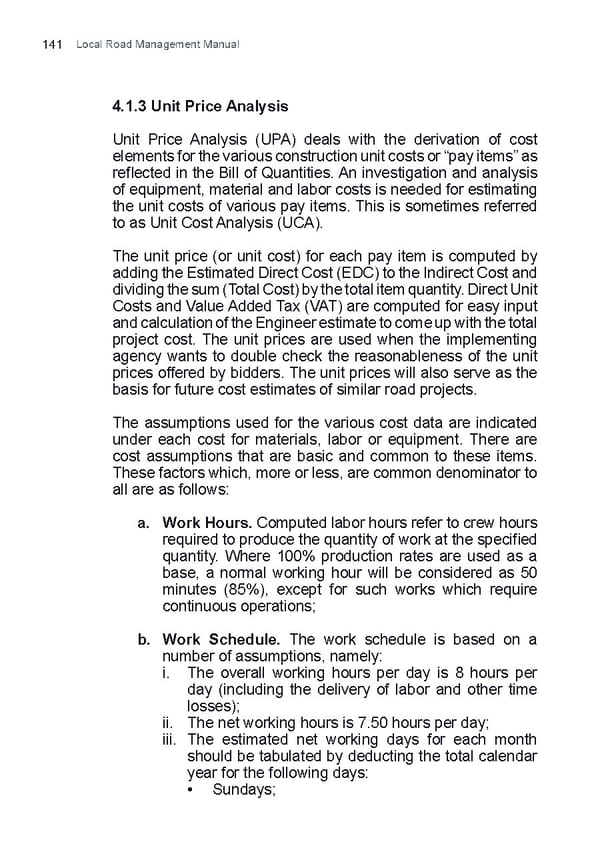Local Road Management Manual 141 4.1.3 Unit Price Analysis Unit Price Analysis (UPA) deals with the derivation of cost elements for the various construction unit costs or “pay items” as relfected in the Bill of Quantities. An investigation and analysis of equipment, material and labor costs is needed for estimating the unit costs of various pay items. This is sometimes referred to as Unit Cost Analysis (UCA). The unit price (or unit cost) for each pay item is computed by adding the Estimated Direct Cost (EDC) to the Indirect Cost and dividing the sum (Total Cost) by the total item quantity. Direct Unit Costs and Value Added Tax (VAT) are computed for easy input and calculation of the Engineer estimate to come up with the total project cost. The unit prices are used when the implementing agency wants to double check the reasonableness of the unit prices offered by bidders. The unit prices will also serve as the basis for future cost estimates of similar road projects. The assumptions used for the various cost data are indicated under each cost for materials, labor or equipment. There are cost assumptions that are basic and common to these items. These factors which, more or less, are common denominator to all are as follows: a. Work Hours. Computed labor hours refer to crew hours required to produce the quantity of work at the speciifed quantity. Where 100% production rates are used as a base, a normal working hour will be considered as 50 minutes (85%), except for such works which require continuous operations; b. Work Schedule. The work schedule is based on a number of assumptions, namely: i. The overall working hours per day is 8 hours per day (including the delivery of labor and other time losses); ii. The net working hours is 7.50 hours per day; iii. The estimated net working days for each month should be tabulated by deducting the total calendar year for the following days: • Sundays;
 LRM Manual CMGP Page 140 Page 142
LRM Manual CMGP Page 140 Page 142